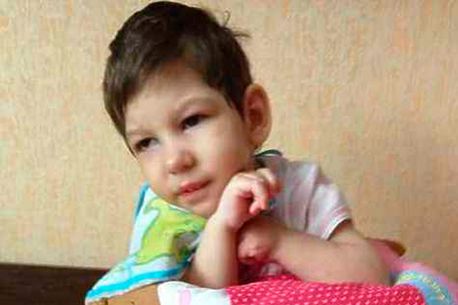U.S. Says It Has Unlocked iPhone Without Apple
The Justice Department said on Monday that it had found a way to unlock an iPhone without help from Apple, allowing the agency to withdraw its legal effort to compel the tech company to assist in a mass-shooting investigation.
The decision to drop the case — which involved demanding Apple’s help to open an iPhone used by Syed Rizwan Farook, a gunman in the December shooting in San Bernardino, Calif., that killed 14 people — ends a legal standoff between the government and the world’s most valuable public company. The case had become increasingly contentious as Apple refused to help the authorities, inciting a debate about whether privacy or security was more important.
Yet law enforcement’s ability to now unlock an iPhone through an alternative method raises new uncertainties, including questions about the strength of security in Apple devices. The development also creates potential for new conflicts between the government and Apple about the method used to open the device and whether that technique will be disclosed. Lawyers for Apple have previously said the company would want to know the procedure used to crack open the smartphone, yet the government might classify the method.
“From a legal standpoint, what happened in the San Bernardino case doesn’t mean the fight is over,” said Esha Bhandari, a staff lawyer at the American Civil Liberties Union. She notes that the government generally goes through a process whereby it decides whether to disclose information about certain vulnerabilities so that manufacturers can patch them.
“I would hope they would give that information to Apple so that it can patch any weaknesses,” she said, “but if the government classifies the tool, that suggests it may not.”
In a two-paragraph filing on Monday, the Justice Department said it had “now successfully accessed the data stored on Farook’s iPhone and therefore no longer requires the assistance from Apple.”
F.B.I. investigators have begun examining the contents of the phone but would not say what, if anything, they have identified so far. A senior federal law enforcement official who spoke on the condition of anonymity said it was possible that law enforcement might not find anything useful on the phone.
The Justice Department also remained tight-lipped about how it was able to finally get into the smartphone after weeks of furious public debate.
A second law enforcement official who spoke on the condition of anonymity to reporters in a conference call said that a company outside the government provided the F.B.I. with the means to get into the phone used by Mr. Farook, which is an iPhone 5C running Apple’s iOS 9 mobile operating system. The official would not name the company or discuss how it was accomplished, nor would officials say whether the process would ultimately be shared with Apple.Photo

Syed Rizwan FarookCreditU.S. Customs and Border Protection, via Associated Press
Melanie Newman, a spokeswoman for the Justice Department, signaled in a statement that the broader battle over access to digital data from devices was not over.
“It remains a priority for the government to ensure that law enforcement can obtain crucial digital information to protect national security and public safety, either with cooperation from relevant parties, or through the court system when cooperation fails,” Ms. Newman said. “We will continue to pursue all available options for this mission, including seeking the cooperation of manufacturers and relying upon the creativity of both the public and private sectors.”
“This case should never have been brought,” Apple said in a statement, adding that it would continue to help with law enforcement investigations.
Given that the F.B.I. may never tell Apple how it forced open the iPhone, the company also said that it would “continue to increase the security of our products as the threats and attacks on our data become more frequent and more sophisticated.”
The conflict between Apple and the government erupted openly last month when a federal magistrate judge in California ordered the Silicon Valley company to help unlock the smartphone used by Mr. Farook. Timothy D. Cook, Apple’s chief executive, opposed the court order in a public letter, saying that “compromising the security of our personal information can ultimately put our personal safety at risk.”
The resistance led to heated rhetoric from both sides in dueling court filings, and the issue spurred debates — finding its way onto late night talk shows, and dividing the public. Apple and the Justice Department had been due in court last week in Riverside, Calif., and the case was seemingly headed toward appeals and even the Supreme Court.
Then last Monday, the Justice Department said it had been approached by a third party with a potential alternative method for opening the iPhone.
The Justice Department’s cracking of the iPhone has implications for other cases that involve locked iPhones. Last month, a federal magistrate judge in the Eastern District of New York refused to grant an order, requested by the government, that asked Apple to extract data from an iPhone used by a drug dealer in Brooklyn. The Justice Department is in the process of appealing that decision.
The federal law enforcement official who spoke on the condition of anonymity to reporters on Monday said it was premature to say whether the method it used to open the phone in the San Bernardino case could be used on phones in other cases. The phone in the Brooklyn case was an iPhone 5S running the iOS 7 mobile software.
“Courts should be skeptical going forward when the government claims it has no other option besides compelling a device maker’s assistance,” said Riana Pfefferkorn, a cryptography fellow at the Stanford Center for Internet and Society.
“Now that the F.B.I. has accessed this iPhone, it should disclose the method for doing so to Apple,” she added. “Apple ought to have the chance to fix that security issue, which likely affects many other iPhones.”


Comments
Post a Comment